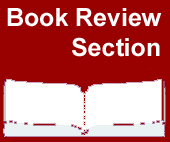
Gruppo Abele (managing editor: Monica Massari)
Turin, Italy: Gruppo Abele, 2003
232 p.
Subject, Methods, Database:
This volume presents the findings of a coordinated research project on the synthetic drug markets, particularly ecstasy (MDMA), in Amsterdam (The Netherlands), Barcelona (Spain), and Turin (Italy). Data were obtained from court files, official documents, media reports and interviews conducted with market participants, members of the dance culture and law enforcement officers.
Content:
Ecstasy consumption took off in Western Europe during the early and mid 1980s with Barcelona and Amsterdam as one of the early starters in the market, while Turin has been more of a trend follower. By the late 1990s the market had reached the stage of stabilization and saturation with ecstasy being partly replaced by cannabis and cocaine and also, in the case of Turin, sniffed heroin.
The distribution and use of ecstasy is closely linked to the dance and techno-music culture. Consumers and retail dealers are part of the dance scene and tend to be "young, employed and studious" members of mainstream society rather than belonging to marginalized and socially deprived social and ethnic groups. Synthetic drugs are predominantly sold in private settings among relatives, friends and acquaintances, and even in semi-open settings in or near clubs, discos and raves, trust and knowledge of various informal 'codes' and interaction rules characterize transactions. A more recent trend is the distribution through delivery and 'order by phone' systems. Overall, the retail market is largely 'disorganized' and highly informal with low entry barriers and the involvement of a myriad of individuals, small groups and loosely organized networks.
The higher levels of the market are likewise characterized by loosely structured, open and highly adaptable networks. There are no criminal groups able to monopolize the market. Even in Turin, where Italian traditional mafia-type organizations exercise a certain level of territorial control and are involved in numerous legal and illegal markets, these groups seem to be uninterested in the ecstasy business. A certain trend towards a concentration of the market is observed on the production level. In the Netherlands, allegedly some ten top criminals previously involved in marihuana and hashish trafficking, have financed the production of synthetic drugs in the Netherlands. Accordingly, ecstasy production in the Netherlands and more recently in Eastern Europe has gone through a growing professionalization and scaling up, while production elsewhere remains at an amateur stage.
Drug policies differ between the Netherlands on the one hand, and Italy and Spain on the other. Dutch drug policy is based on harm reduction and a public health approach, while Italy and Spain tend de facto to criminalize synthetic drugs consumption through administrative sanctions and fines. The focus on Dutch drug law enforcement mostly remains on large scale trafficking, while both in Barcelona and Turin the emphasis is on the repression of middle and low level trafficking. Police measures against synthetic drugs have been influenced by varying levels of media attention and are most clearly related to increases of public awareness following drug related deaths in the dance scene.
Assessment:
The separate reports written by the research groups in each of the three cities provide a good overview of the various aspects of the synthetic drugs market in historical perspective, including consumption and distribution patterns, market and group structures, law enforcement and policy responses, and media coverage. The volume is valuable as it is the first international study into this subject. By presenting the findings in similar formats, some level of comparability is achieved; something that can only rarely be found in the study of organized crime. As such, the project sets an example for future research. At the same time the volume highlights differences in the state of organized crime research. While the Dutch researchers could take advantage of preexisting contacts to informers, the research groups in Barcelona and Turin had to start more or less from scratch. Consequently, the report on the situation in Amsterdam is clearly more detailed and better empirically grounded than the other two reports. This emphasizes the urgent need for continuity in the study of organized crime.
Overall Evaluation:
A pioneering work on the synthetic drugs market in Western Europe and a good example for international research on organized crime.
Further Reading:
Paoli, Letizia, The 'invisible hand of the market': the illegal drugs trade in Germany, Italy, and Russia, in: P. C. van Duyne et al. (eds.), Criminal Finances and Organising Crime in Europe, Nijmegen, Netherlands: Wolf Legal Publishers, 2003, 19-40.
Pearson, Geoffrey, and Dick Hobbs, Middle market drug distribution, London: Home Office, 2001. (read review)
Ruggiero, Vincenzo, and Nigel South, Eurodrugs: drug use, markets and trafficking in Europe, London: UCL Press, 1995.
© Klaus von Lampe, all rights reserved.